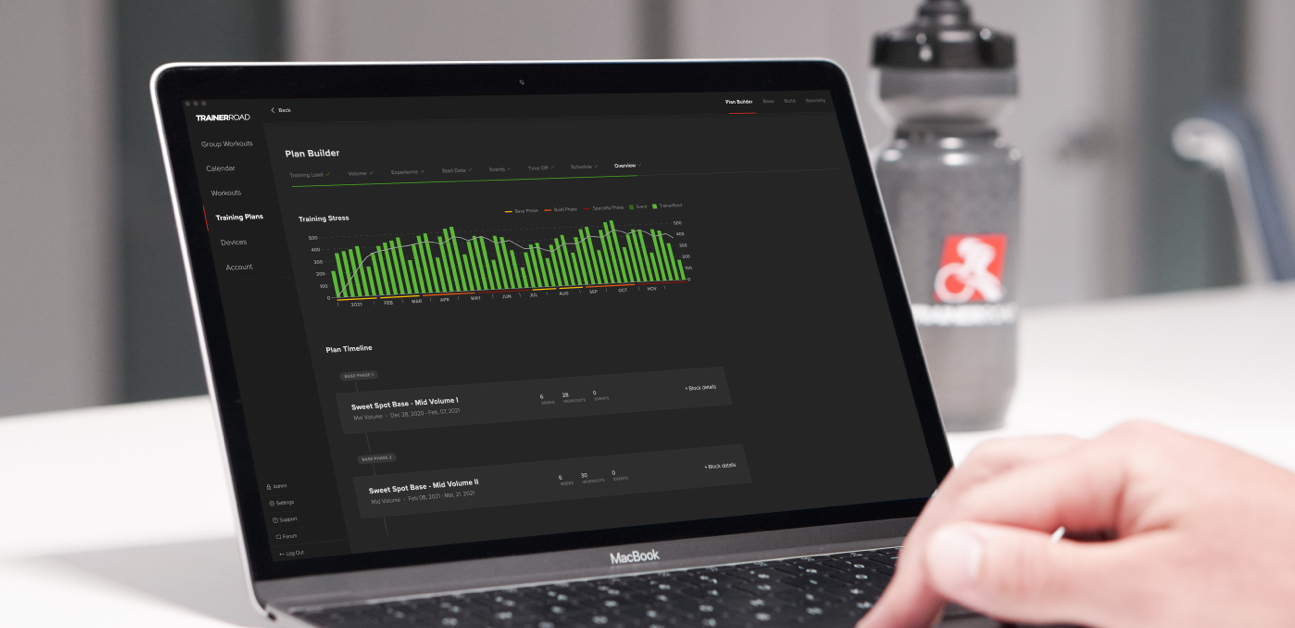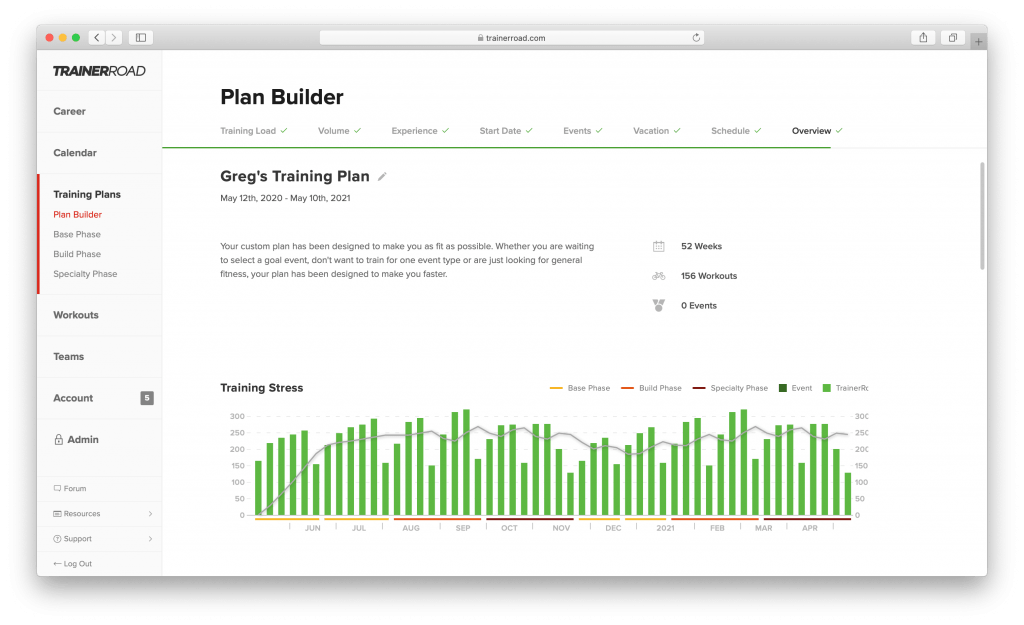The Benefits of a Season Long Structured Training Plan

Training all of your energy systems for the demands and challenges of your racing and goals takes time. This season, ditch your short term training plan for a long term approach and add a training plan to your Calendar that aligns with all of your goals.
For more on training check out the Ask a Cycling Coach Ep. 264.
Picking the Right Plan
When you’re putting in your own hard work, time, and energy, it’s normal to want to see results from your training sooner rather than later. This can make it tempting to jump into a short term training plan that builds your fitness up quickly instead of a longer approach. While a short term approach can successfully build temporary fitness, it shortchanges specific capabilities that are critical to cycling performance.
A season-long training plan is the best way to build strong and versatile fitness for the assorted challenges that racing and riding throws your way. Here’s the major difference between short term plans and long term plans, and why you’re much better suited planning ahead with a season-long training plan.
Training the Energy Systems
Some fitness takes more time to build than others. This is because certain energy systems take longer to train than others. Your energy systems are the systems that deliver and produce energy in your body. There are three energy systems; the aerobic energy system, the anaerobic energy system, and the neuromuscular energy system.
The aerobic energy system is the main source of energy for all sustained efforts and endurance activities. The anaerobic energy system produces energy during intense efforts that range between thirty seconds and three minutes. The neuromuscular system (technically the creatine phosphate system) is responsible for producing energy for quick, intense bursts of power, less than thirty seconds. All of these energy systems are used during cycling and racing, and each of them is trained a little differently.
Adaptive Training
Get the right workout, every time with training that adapts to you.
Check Out TrainerRoadYour season-long training plan is designed to thoroughly train these energy systems with a Base, Build, and Specialty phase. The base phase addresses your aerobic fitness; the build phase builds on your aerobic fitness while addressing your anaerobic capabilities and some neuromuscular capabilities. Finally, the Specialty phase fine-tunes your anaerobic and neuromuscular capabilities while reinforcing your aerobic capabilities.
An entire training progression takes 28 weeks and progresses through Base, Build, Specialty. It’s structured this way because the aerobic capabilities focused on in Base take more time to build than the anaerobic or neuromuscular capabilities during Build and Specialty. The aerobic capabilities also serve as a foundation for the anaerobic and neuromuscular capabilities.
Energy System Resources
Long Term vs. Short Term Plans
It takes time to build a broad aerobic base. This is why we recommend spending twelve weeks completing Sweet Spot Base. In comparison, your anaerobic system trains up rather quickly, but without maintenance will diminish rapidly. This is why you want to focus on high power closer to your event while touching on your aerobic fitness throughout your training plan.
A short training plan can effectively build the anaerobic system up quickly, but it won’t build long term fitness without the aerobic foundation built in a long term training plan. The only thing a short term plan might work for is to brush up on and maintain current abilities. A plan like our Time Crunch plans maintains your fitness by brushing up on these energy systems.
Avoiding “Brittle” Fitness
When fitness is built quickly without an aerobic foundation, it creates what Head TrainerRoad coach, Coach Chad, refers to as brittle fitness. Brittle fitness is not supple and flexible like aerobic capacity and muscular endurance. It’s gained quickly but difficult to hang onto. Ultimately it’s easy to lose. Brittle fitness might perform well in minimal instances, but it breaks down when challenged by different or unexpected demands. This type of fitness is unlikely to stand up against the demands that racing and riding present.
The goal of a training plan is to build fitness that is resilient yet flexible. You want fitness that can withstand the challenges of racing, the demands of training, and outlast other athletes’ and competitors’ fitness. Most importantly, resilient fitness is flexible and can perform when given a variety of demands and challenges. A long term training plan sharpens several abilities and strengthens all of your energy systems.
Planning Your Training
Planning out a season-long training plan is easy to do when you use Plan Builder. Plan Builder uses your available training time, current training load, goal events, and experience with interval training to create a custom training plan for you and your goal. Plan Builder will maximize the available training time you have so that you’re building the most robust and resilient fitness that you can. Even when you don’t have quite as much time as you’re hoping for, Plan Builder will build you the best possible training plan given how much time you have.

For more cycling training knowledge, listen to Ask a Cycling Coach — the only podcast dedicated to making you a faster cyclist. New episodes are released weekly.